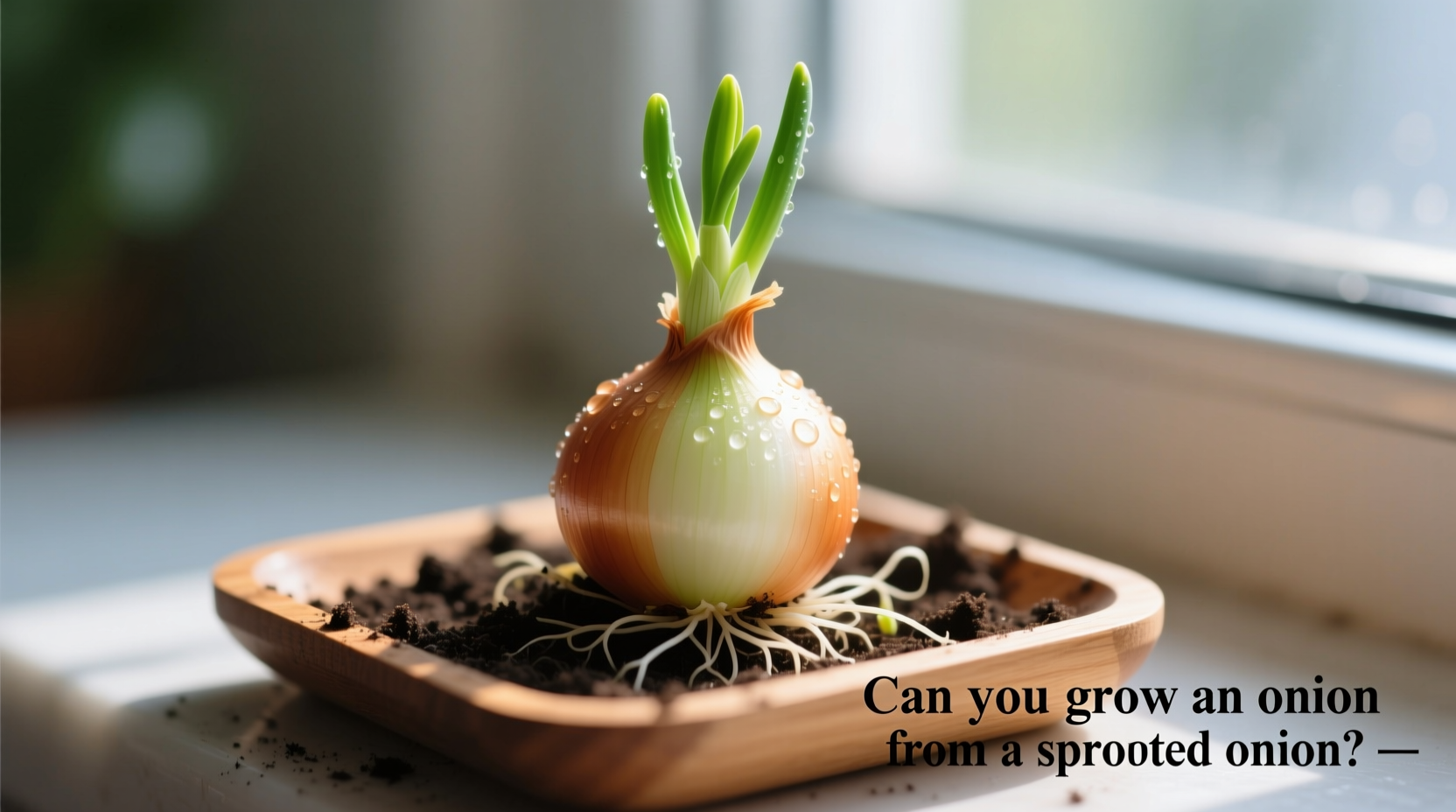Yes, you can absolutely grow an onion from a sprouted onion—it's one of the easiest food scraps to regenerate. This practical guide reveals exactly how to transform that sprouted bulb in your pantry into a thriving onion plant, complete with step-by-step instructions, growth timelines, and proven methods that yield harvestable onions in 60-90 days. You'll learn water vs. soil techniques, troubleshooting tips, and how to maximize your yield with minimal effort.
That sprouted onion sitting in your pantry isn't just past its prime—it's a free gardening opportunity waiting to happen. Many home cooks mistakenly toss sprouted onions, unaware they contain everything needed to grow fresh onions right on your windowsill or in your garden. This complete guide walks you through the science-backed process of regrowing onions from sprouted bulbs, drawing on agricultural research from university extension programs and decades of practical gardening experience.
The Science Behind Sprouted Onion Regrowth
When onions begin sprouting, they're activating their natural reproductive cycle. The green shoots emerging from the top are actually the plant's attempt to photosynthesize and create new growth. According to research from the University of Minnesota Extension, Allium cepa (the common onion) stores energy in its bulb specifically for this regrowth process. This biological adaptation makes sprouted onions ideal candidates for regeneration—no seeds required.
| Growth Stage | Timeframe | Visible Changes |
|---|---|---|
| Root Development | 3-7 days | White roots emerge from base |
| Initial Shoot Growth | 7-14 days | Green shoots reach 2-3 inches |
| Established Growth | 3-4 weeks | Shoots thicken, roots multiply |
| Harvest Ready | 60-90 days | New bulb forms, shoots mature |
Step-by-Step: Growing Onions from Sprouted Bulbs
Preparing Your Sprouted Onion
Start with a firm sprouted onion showing healthy green shoots. Remove any loose outer layers and trim the root end to expose fresh tissue—this encourages new root growth. The Oregon State University Extension Service recommends cutting about 1/4 inch off the root plate to stimulate root development. Keep the green shoots intact as they'll continue photosynthesizing.
Choosing Your Growing Method
You have two proven options for regrowing sprouted onions, each with distinct advantages:
| Water Method | Soil Method |
|---|---|
| Best for quick green onion harvests | Ideal for full bulb development |
| Requires glass jar and water | Needs potting soil and container |
| Visible root development | Natural growing environment |
| Water changes needed every 2-3 days | Less maintenance once established |
| Produces scallions in 2-3 weeks | Yields full onions in 60-90 days |
Water Regrowth Technique
Place your prepared onion in a narrow glass with the root end submerged in water (about 1/2 inch deep). Position it so the green shoots extend above the rim. Change the water every 2-3 days to prevent bacterial growth. Within a week, you'll see white roots developing. This method works best for harvesting green onions—simply snip what you need while leaving the bulb to continue growing.
Soil Planting Method
For complete onion regeneration, plant your sprouted bulb in well-draining potting mix. Bury it with the top third exposed (the sprouts should be above soil level). Water thoroughly and place in a sunny location. The Penn State Extension recommends using a container at least 6 inches deep to accommodate root development. This method produces both green shoots and a new bulb.
Optimizing Growth Conditions
Onions thrive with 6-8 hours of direct sunlight daily. Maintain consistent moisture—the soil should feel like a damp sponge. Temperature matters: onions grow best between 55-75°F (13-24°C). Avoid these common pitfalls:
- Overwatering (leads to bulb rot)
- Insufficient light (causes weak, leggy growth)
- Planting too deep (prevents proper bulb formation)
- Using sprouted onions that have become soft or moldy

Troubleshooting Common Issues
Yellowing leaves often indicate overwatering—let the soil dry slightly between waterings. If growth stalls, try a balanced liquid fertilizer every 2-3 weeks. Soft, mushy bulbs mean rot has set in—start over with a firmer sprouted onion. Remember that sprouted onions from grocery stores may be varieties not optimized for regrowth, so results can vary.
Harvesting Your Homegrown Onions
You can begin harvesting green shoots anytime—just snip what you need with scissors, leaving at least 2 inches of growth. For full bulb harvest, wait until the tops naturally fall over (about 60-90 days). Gently dig up the new bulb, cure it in a warm, dry place for 1-2 weeks, then store in a cool, dark location. While the regrown bulb won't match the size of commercially grown onions, it will deliver fresh, flavorful results.
Maximizing Your Onion Regrowth Success
For best results, start with firm, recently sprouted onions rather than those that have been sprouting for weeks. The Royal Horticultural Society notes that onions stored in cool, dry conditions sprout more vigorously than those kept in warm, humid environments. Consider these pro tips:
- Use organic onions when possible (non-organic may be treated to prevent sprouting)
- Rotate your container periodically for even sun exposure
- Plant multiple sprouted onions for continuous harvest
- Combine water and soil methods for staggered harvests











 浙公网安备
33010002000092号
浙公网安备
33010002000092号 浙B2-20120091-4
浙B2-20120091-4